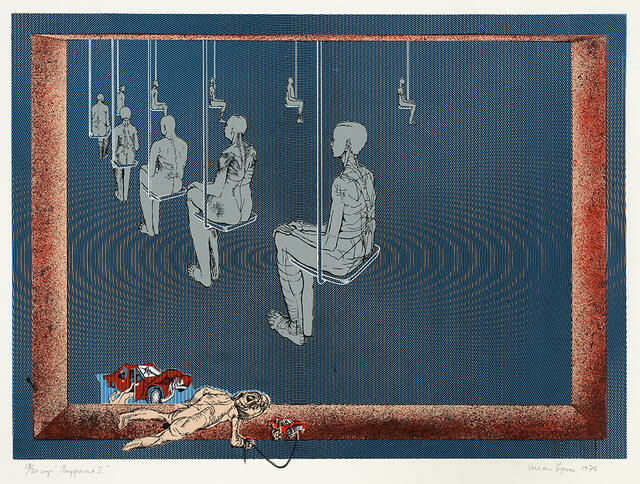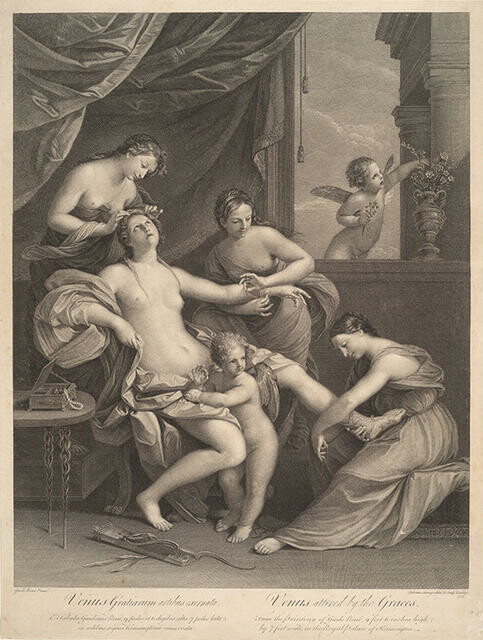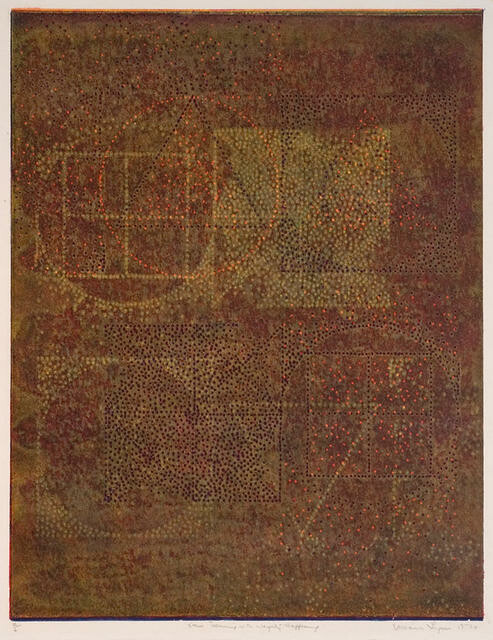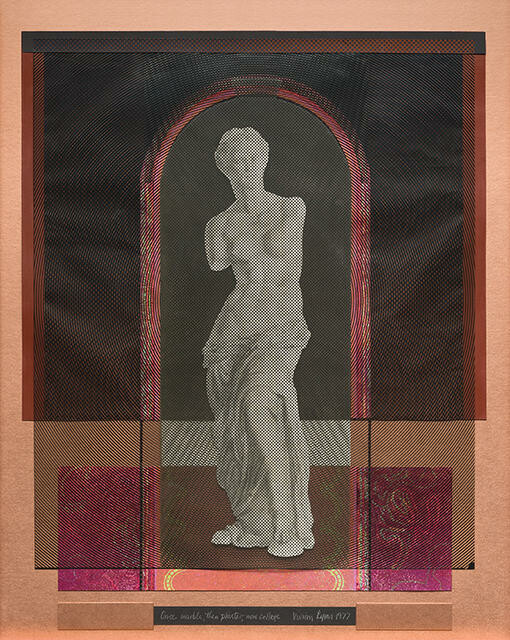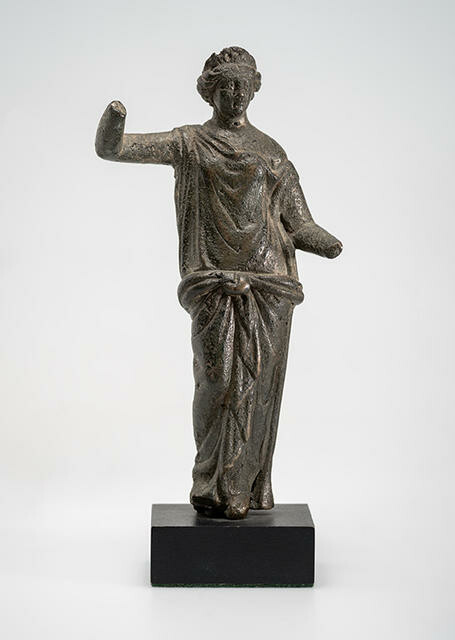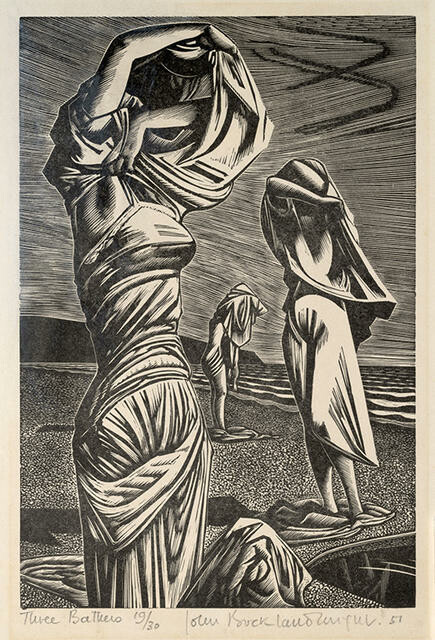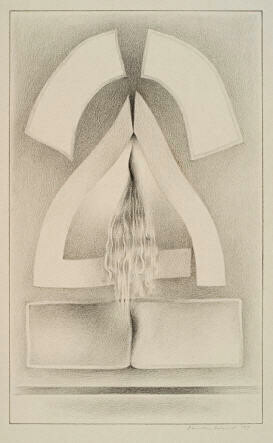B.
50s Models Series by Vivian Lynn
Collection
This article first appeared as 'Ahead of her time' in The Press on 18 October 2013
The old world attitudes and conventions that underpinned the School of Fine Arts at Canterbury College in the 1950s come under scrutiny in Vivian Lynn's 50s Models Series, a set of collages recently acquired for Christchurch Art Gallery's collection. When Lynn attended the College, between 1949 and 1951, she found art school life models still arranged according to classical ideals; the men outfitted with spears and posed in heroic stances, the women positioned more passively to reflect the roles of muse or submissive victim. Lynn was struck by the contrast between the archaic world-view preserved in the life drawing room and the post-war zeitgeist that was starting to emerge on the campus outside. Real change was slow, however, and hard-won: when Lynn held her first solo exhibition in Christchurch, some fifteen years later, she was chagrined to discover that a newspaper review of her work was printed not on the Arts page, with the men, but in the Women's section.
By 1977, Lynn was an established artist whose practice was informed and enlivened by a feminist perspective. She returned to the life studies and classical drawings she had made at art school, cutting them up and layering them with fragments from newer works, found images, family snapshots and dot-printed acetate sheets. In tightly balanced compositions that seem to graft together not only materials and images, but moments of time and history, the 14 works in the 50s Models Series consider the sexual politics of the Western art historical tradition. In They made the law, but she---?, a female figure is walled in by fields of Letraset dots and lines that seem to oscillate, forming dazzling and oppressive moiré effects. Rendered anonymous in her nudity, she submits to the viewer's gaze, while a monstrous hand, brandishing a furled document alluded to in the title, looms over her. At bottom right, a flayed torso is further exposed by a foreign hand, its colouration suggesting the chill of marble on flesh. Lynn's works exploit the instability of the collage medium, crafting shifting, fragmented landscapes that threaten to collapse in on themselves.
In an artistic career that has spanned almost 60 years, Lynn has moved easily and deliberately between a wide range of media, producing not only collages, but also drawings, paintings, prints, books, sculptures, photographs and installations. Fabricating nuanced visual vocabularies to fit her purposes, she has sometimes co-opted unexpected and confronting materials, such as hair, skin and MRI scans of her own brain. In Guarden gates (1982), now part of the national art collection at Te Papa Tongarewa, she presented seven wall-mounted cyclone fences, through which lengths of human hair were wound and plaited in intricate patterns. In such works, as in the highly charged compositions of the 50s collages, Lynn's insistent and inventive foregrounding of the female challenges traditional Western attitudes to gender, which considered women largely in physical, rather than intellectual or cultural, terms.
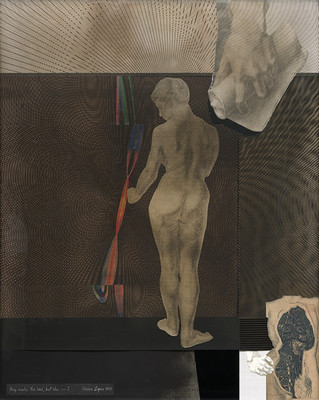
Vivian Lynn 50s Models Series Collection of Christchurch Art Gallery Te Puna o Waiwhetū; purchased, 2012

